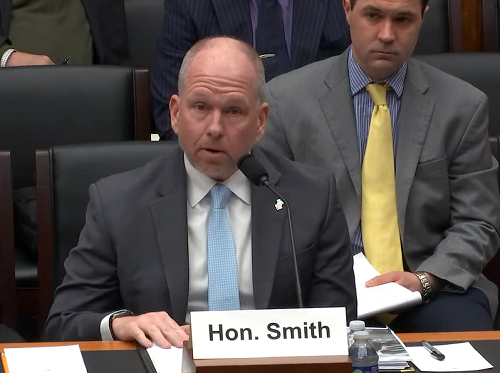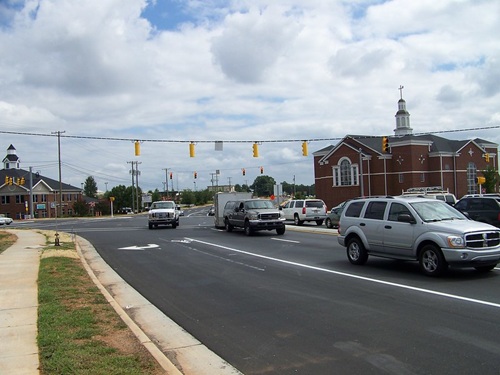A subcommittee within the House of Representatives Committee on Transportation and Infrastructure this week reviewed efforts to improve the safety of railroad grade crossing across the country.
[Above photo by House T&I committee]
The Subcommittee on Railroads, Pipelines, and Hazardous Materials hearing on January 18 featured four witnesses: Amit Bose, administrator, of the Federal Railroad Administration; Jennifer Homendy, chair of the National Transportation Safety Board; Ian Jefferies, president and CEO of the Association of American Railroads; and Michael Smith, commissioner of the Indiana Department of Transportation.
Smith provided a ground-level view of the challenges facing state departments of transportation at the hearing as they work to improve the safety of railroad grade crossings nationwide.

“Concerning highway-rail crossings and rail crossing safety, Indiana faces a unique challenge that comes with immense opportunity. With Chicago, the nation’s largest rail hub, in close proximity to [our] state, some of the busiest rail lines cross Indiana, resulting in more than 7,500 highway-grade crossings – the fifth highest in the U.S.,” he said in his testimony. “Over the last two decades, we’ve seen a decrease in the number of highway-rail grade crossing collisions and as a state we’ve made great strides in our efforts to improve safety and mobility through crossing removals, grade separations, and other upgrades.”
However, despite those efforts, Smith said Indiana still finds itself among states with high incidences of rail crossing collisions, injuries and fatalities each year.
“As of November 2023, there were 78 collisions at public highway-railroad crossings in 2023, resulting in 12 fatalities and 20 injuries,” he noted. “These numbers make it clear that the job is not finished, and there is more work to be done.”
Smith pointed out that his agency is deploying “multiple agents of change” related to rail crossing safety, one of those being INDOT’s Local Trax Rail Overpass Program, through which the agency serves as an example to others in developing “innovative programs” that promote and encourage collaboration and teamwork amongst state, local, and private partners.
“Our state’s data-driven approach and comprehensive planning efforts have resulted in 122 crossing improvement projects in the last three years alone (2021-2023), including safety improvements such as installation of warning bells, lights and overhead cantilevers to larger-scale grade separation projects and crossing removals,” he added.
Smith also pointed to impending efforts outlined in Indiana’s Highway-Rail Grade Crossing Safety Action Plan, which is currently awaiting final approval from the FRA.
“A variety of strategies have been identified to continue our focus on system-wide, multi-disciplinary solutions that will be prioritized for funding and implemented going forward,” he explained. Those initiatives include:
- Closing crossings or creating separations to eliminate interactions between trains and road users;
- Upgrading from passive to active warning systems at crossing, and improving and maintaining existing warning devices;
- Engaging local agencies on traffic signal pre-emption and how it can be implemented;
- Collaborating with railroads and local agencies to explore broader implementation and maintenance of passive warning enhancements;
- Informing and educating stakeholders on highway-rail grade crossing topics;
- Considering rail-grade crossing safety in all transportation projects; and
- Collaborating with enforcement agencies to help prevent crashes at highway-rail grade crossings.
 Top Stories
Top Stories


